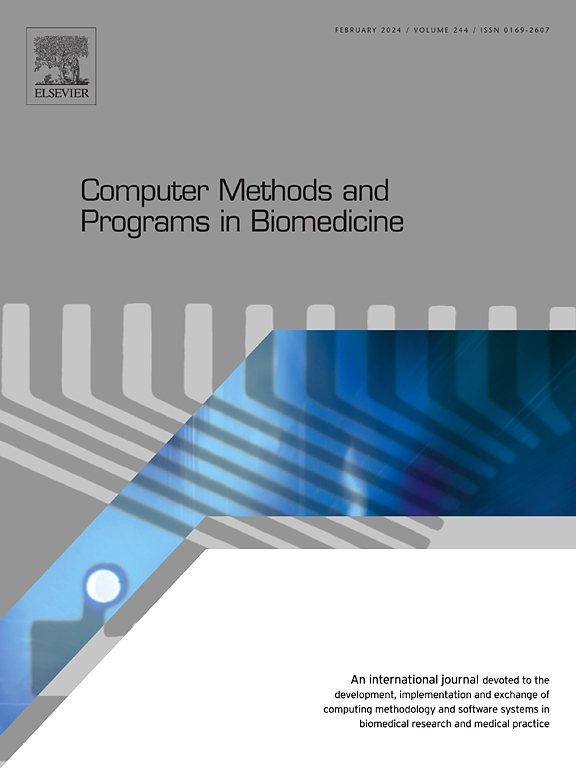TSPE: Reconstruction of multi-morphological tumors of NIR-II fluorescence molecular tomography based on positional encoding
IF 4.9
2区 医学
Q1 COMPUTER SCIENCE, INTERDISCIPLINARY APPLICATIONS
引用次数: 0
Abstract
Background and Objective
Fluorescence molecular tomography (FMT) is a noninvasive and highly sensitive imaging modality, which can display 3D visualization of tumors by reconstructing fluorescence probes’ distribution. However, existing methods mostly ignore positional information, which includes spatial structure information crucial for the reconstruction of light sources. This limits the reconstruction accuracy of light sources with multiple morphologies. Therefore, to our best knowledge, we for the first time integrated positional encoding into the FMT task, enabling the incorporation of high-frequency spatial structure information.
Methods
We proposed a three-stage network embedded with a positional encoding module (TSPE) to perform high reconstruction accuracy of tumors with multiple morphologies. Additionally, our study focused on NIR-II which had less severe scattering problems and higher imaging accuracy than NIR-I.
Results
The simulation experiments demonstrated that TSPE achieved high reconstruction accuracy in NIR-II FMT, with the barycenter error (BCE) for single-tumor reconstruction reaching 0.18 mm, representing a 14 % reduction compared to other methods. TSPE more accurately distinguished adjacent multi-morphological tumors with a minimal edge-to-edge distance (EED) of 0.3 mm. In vivo experiments also showed that TSPE could achieve more accurate reconstruction of tumors compared with other methods.
Conclusions
The proposed method can achieve the best reconstruction performance. It has potential to promote the development of NIR-II FMT and its preclinical application.
求助全文
约1分钟内获得全文
求助全文
来源期刊

Computer methods and programs in biomedicine
工程技术-工程:生物医学
CiteScore
12.30
自引率
6.60%
发文量
601
审稿时长
135 days
期刊介绍:
To encourage the development of formal computing methods, and their application in biomedical research and medical practice, by illustration of fundamental principles in biomedical informatics research; to stimulate basic research into application software design; to report the state of research of biomedical information processing projects; to report new computer methodologies applied in biomedical areas; the eventual distribution of demonstrable software to avoid duplication of effort; to provide a forum for discussion and improvement of existing software; to optimize contact between national organizations and regional user groups by promoting an international exchange of information on formal methods, standards and software in biomedicine.
Computer Methods and Programs in Biomedicine covers computing methodology and software systems derived from computing science for implementation in all aspects of biomedical research and medical practice. It is designed to serve: biochemists; biologists; geneticists; immunologists; neuroscientists; pharmacologists; toxicologists; clinicians; epidemiologists; psychiatrists; psychologists; cardiologists; chemists; (radio)physicists; computer scientists; programmers and systems analysts; biomedical, clinical, electrical and other engineers; teachers of medical informatics and users of educational software.
 求助内容:
求助内容: 应助结果提醒方式:
应助结果提醒方式:


